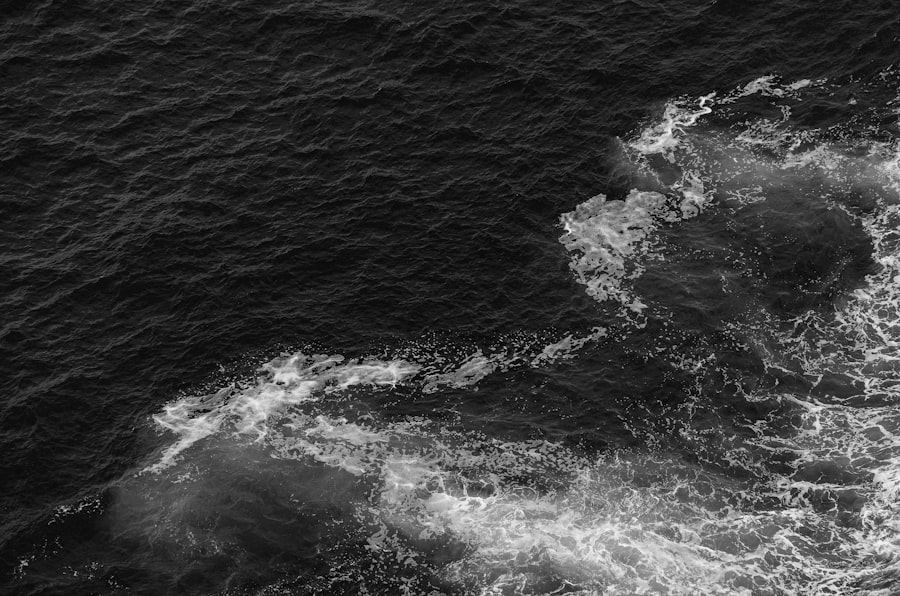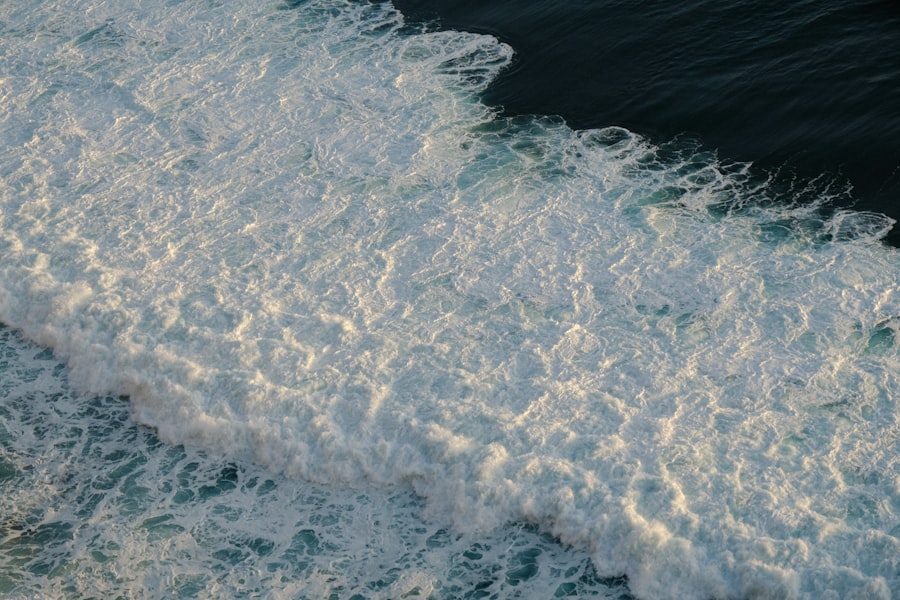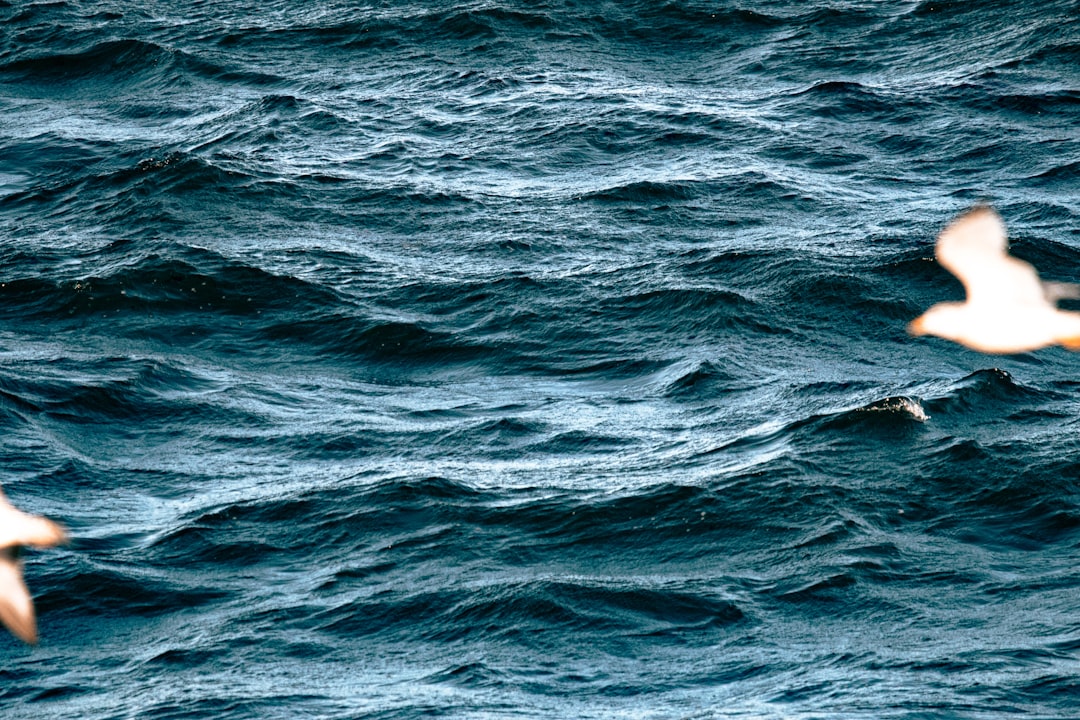The Drake Passage, a body of water situated between the southern tip of South America and Antarctica, is renowned for its tumultuous seas and unpredictable weather patterns. This narrow stretch of ocean, measuring approximately 800 kilometers (500 miles) in width, serves as a critical conduit for maritime traffic between the Atlantic and Pacific Oceans. Its significance extends beyond navigation; the Drake Passage is a vital area for scientific research, particularly concerning oceanography and marine biology.
The passage is often characterized by its fierce winds and towering waves, making it a focal point for studies on wave dynamics and their implications for both marine ecosystems and human activities. The unique geographical positioning of the Drake Passage contributes to its notorious reputation. The convergence of the Atlantic, Pacific, and Southern Oceans creates a complex interplay of currents and weather systems that can lead to extreme conditions.
Mariners and researchers alike have long been captivated by the challenges posed by this waterway. Understanding the dynamics of wave height in the Drake Passage is essential not only for safe navigation but also for comprehending broader environmental changes that may be occurring in this sensitive region.
Key Takeaways
- Drake Passage is a narrow stretch of water between South America’s Cape Horn and the South Shetland Islands of Antarctica.
- Wave height in Drake Passage is influenced by various factors such as wind speed, ocean currents, and the shape of the seafloor.
- Historical data shows that wave heights in Drake Passage can reach up to 30 meters during extreme weather events.
- Current research on wave height in Drake Passage focuses on using advanced technology to improve measurement accuracy and understanding the impact on marine life.
- Wave height plays a crucial role in climate change studies as it affects ocean circulation and heat transfer.
Understanding the Dynamics of Wave Height
Wave height in the Drake Passage is influenced by a multitude of factors, including wind speed, fetch, and the underlying topography of the ocean floor. The interaction between these elements creates a dynamic environment where waves can reach staggering heights, sometimes exceeding 30 meters (98 feet) during severe storms. The physics of wave formation involves the transfer of energy from wind to water, resulting in the creation of waves that can travel vast distances across the ocean.
In the Drake Passage, the combination of strong winds and an unobstructed fetch allows for the development of particularly large and powerful waves. Moreover, the dynamics of wave height are not static; they fluctuate based on seasonal changes and weather patterns. During certain times of the year, particularly in winter months, storms can intensify, leading to increased wave activity.
Conversely, calmer periods may result in lower wave heights. Understanding these fluctuations is crucial for predicting conditions that affect both navigation and marine life. Researchers utilize various models to simulate wave behavior, providing insights into how these dynamics evolve over time and under different environmental conditions.
Factors Influencing Wave Height in Drake Passage

Several key factors contribute to the variability of wave height in the Drake Passage. One primary influence is wind speed; stronger winds generate larger waves due to increased energy transfer to the water surface. The fetch, or the distance over which the wind blows across open water, also plays a significant role.
In the Drake Passage, the relatively unobstructed expanse allows winds to build waves over considerable distances before they encounter land or other barriers. Additionally, ocean currents can significantly impact wave height. The Antarctic Circumpolar Current flows through the Drake Passage, creating a unique interaction with incoming swells from other oceans.
This current can amplify wave heights under certain conditions, leading to particularly hazardous situations for vessels navigating through the area. Furthermore, atmospheric pressure systems can influence wind patterns and, consequently, wave formation. Understanding these interconnected factors is essential for predicting wave behavior and ensuring safe passage through this challenging maritime region.
Historical Data on Wave Height in Drake Passage
| Date | Wave Height (m) |
|---|---|
| 01/01/2020 | 3.5 |
| 01/02/2020 | 4.2 |
| 01/03/2020 | 3.8 |
| 01/04/2020 | 4.5 |
Historical data on wave height in the Drake Passage provides valuable insights into long-term trends and patterns that have emerged over decades. Mariners have documented their experiences navigating these waters for centuries, contributing to a rich repository of anecdotal evidence regarding wave conditions. However, systematic scientific measurements began in earnest in the late 20th century with advancements in meteorological technology and oceanographic research.
Research initiatives have compiled extensive datasets that track wave heights over time, revealing fluctuations that correlate with broader climatic changes. For instance, studies have indicated that extreme weather events have become more frequent in recent years, leading to an increase in average wave heights. This historical perspective is crucial for understanding how climate change may be influencing ocean dynamics in the Drake Passage and beyond.
By analyzing past data alongside current observations, researchers can better predict future trends and their potential impacts on marine ecosystems and navigation safety.
Current Research on Wave Height in Drake Passage
Current research on wave height in the Drake Passage is multifaceted, encompassing various scientific disciplines such as oceanography, meteorology, and environmental science. Researchers are employing advanced modeling techniques to simulate wave behavior under different climatic scenarios, allowing them to assess potential future changes in wave dynamics.
In addition to modeling efforts, field studies are being conducted to gather real-time data on wave conditions in the Drake Passage. Buoys equipped with sophisticated sensors are deployed throughout the region to monitor wave height, frequency, and direction continuously. This data collection is vital for validating models and enhancing predictive capabilities.
Furthermore, researchers are increasingly focusing on the implications of changing wave patterns for marine life and ecosystems within the passage, recognizing that shifts in wave dynamics can have cascading effects on biodiversity and habitat stability.
Impact of Wave Height on Marine Life in Drake Passage

The impact of wave height on marine life in the Drake Passage is profound and multifaceted. High wave activity can disrupt feeding patterns and breeding behaviors among various marine species. For instance, many fish species rely on stable conditions for spawning; excessive turbulence can displace eggs or larvae, leading to decreased survival rates.
Additionally, larger waves can affect nutrient distribution within the water column, influencing food availability for marine organisms at different trophic levels. Moreover, extreme wave conditions can pose physical challenges for marine mammals such as seals and whales. These animals often rely on specific habitats for resting or breeding; significant changes in wave dynamics can alter these habitats or make them less accessible.
As researchers continue to study these interactions, they are uncovering critical links between wave height and overall ecosystem health in the Drake Passage. Understanding these relationships is essential for developing effective conservation strategies aimed at protecting vulnerable marine species in this dynamic environment.
Challenges of Measuring Wave Height in Drake Passage
Measuring wave height in the Drake Passage presents numerous challenges due to its remote location and harsh environmental conditions. The region is notorious for its unpredictable weather patterns, which can change rapidly and create dangerous situations for researchers attempting to collect data at sea. High winds and rough seas can hinder both observational efforts and equipment deployment, making it difficult to obtain accurate measurements consistently.
Additionally, the vastness of the Drake Passage complicates data collection efforts. Researchers must deploy instruments over large areas to capture representative samples of wave conditions across different regions within the passage. This requires significant logistical planning and resources, often involving collaboration between multiple research institutions and agencies.
Despite these challenges, advancements in technology are helping to improve measurement accuracy and reliability, enabling scientists to gather more comprehensive data on wave dynamics in this critical maritime area.
Technology Used to Measure Wave Height in Drake Passage
The technology employed to measure wave height in the Drake Passage has evolved significantly over recent years, enhancing researchers’ ability to collect accurate data under challenging conditions. Traditional methods involved ship-based observations or coastal stations; however, advancements in remote sensing technology have revolutionized data collection efforts. Satellite altimetry has emerged as a powerful tool for measuring wave heights across vast oceanic regions from space.
In addition to satellite technology, buoys equipped with advanced sensors are deployed throughout the passage to provide real-time measurements of wave height and other oceanographic parameters. These buoys are often designed to withstand harsh conditions while transmitting data back to researchers via satellite communication systems. Furthermore, numerical modeling techniques are increasingly used alongside observational data to improve predictions of wave behavior under varying environmental scenarios.
This combination of technologies allows scientists to gain a more comprehensive understanding of wave dynamics in the Drake Passage.
The Role of Wave Height in Climate Change Studies
Wave height plays a crucial role in climate change studies as it serves as an indicator of broader environmental shifts occurring within ocean systems. Changes in wave patterns can reflect alterations in wind regimes, ocean temperatures, and atmospheric pressure systems—all of which are influenced by climate change. By monitoring variations in wave height over time, researchers can gain insights into how climate change is impacting ocean dynamics and marine ecosystems.
Moreover, understanding wave height is essential for assessing potential risks associated with climate change-related phenomena such as sea-level rise and increased storm intensity. As global temperatures rise, it is anticipated that extreme weather events will become more frequent, leading to higher average wave heights in many regions—including the Drake Passage. This knowledge is vital for developing adaptive strategies aimed at mitigating impacts on coastal communities and marine habitats vulnerable to changing ocean conditions.
Safety Considerations for Navigating Drake Passage
Navigating the Drake Passage requires careful consideration of safety protocols due to its notorious reputation for rough seas and unpredictable weather patterns. Mariners must be well-prepared for sudden changes in conditions that can lead to hazardous situations at sea. Understanding current weather forecasts and monitoring real-time data on wave heights are essential components of safe navigation through this challenging waterway.
Vessels traversing the Drake Passage should be equipped with appropriate safety gear and technology designed to withstand extreme conditions. This includes reinforced hulls capable of handling large waves and advanced navigation systems that provide accurate information about current sea states. Additionally, crew training focused on emergency procedures is critical for ensuring safety during unexpected events such as storms or equipment failures while at sea.
Future Directions for Studying Wave Height in Drake Passage
The future directions for studying wave height in the Drake Passage are promising as advancements in technology continue to enhance research capabilities. Increased collaboration among international research institutions will likely lead to more comprehensive datasets that capture long-term trends in wave dynamics across this critical maritime region. Additionally, integrating interdisciplinary approaches—combining oceanography with climate science—will provide deeper insights into how changing wave patterns relate to broader environmental changes.
Furthermore, ongoing developments in remote sensing technology will enable researchers to monitor wave heights with greater precision than ever before. As climate change continues to impact ocean systems globally, understanding these dynamics will be essential for informing conservation efforts and ensuring safe navigation through one of the world’s most challenging maritime environments. By prioritizing research on wave height in the Drake Passage, scientists can contribute valuable knowledge that supports both ecological sustainability and maritime safety in this vital region.
The Drake Passage, known for its turbulent waters and towering waves, is a subject of fascination for many maritime enthusiasts and researchers.
For those interested in exploring more about the dynamics of ocean waves and the unique conditions of the Drake Passage, a related article can be found on MyGeoQuest. This article delves into the factors contributing to the wave heights in this notorious stretch of water. You can read more about it by visiting MyGeoQuest.
WATCH NOW! Drake Passage: Earth’s Deadliest Waters Revealed
FAQs
What is the Drake Passage?
The Drake Passage is the body of water between the southern tip of South America and the northern tip of the Antarctic Peninsula. It is known for its rough seas and strong winds.
How high can waves get in the Drake Passage?
Waves in the Drake Passage can reach heights of up to 30 meters (98 feet) during extreme weather conditions. These waves are some of the largest in the world due to the strong winds and currents in the area.
What causes such high waves in the Drake Passage?
The high waves in the Drake Passage are primarily caused by the strong westerly winds that sweep across the Southern Ocean. These winds can create large swells that result in towering waves.
Are there specific times of the year when waves are higher in the Drake Passage?
The waves in the Drake Passage are generally high throughout the year due to the constant strong winds and currents in the area. However, during the austral winter (June to August), the waves can be particularly intense due to the stormier weather conditions.
Are there any safety concerns for ships and boats traveling through the Drake Passage?
Due to the extreme weather and high waves, the Drake Passage is known for its challenging sailing conditions. Ships and boats traveling through the area need to be well-equipped and prepared for rough seas. It is recommended to have experienced crew and sturdy vessels when navigating the Drake Passage.
